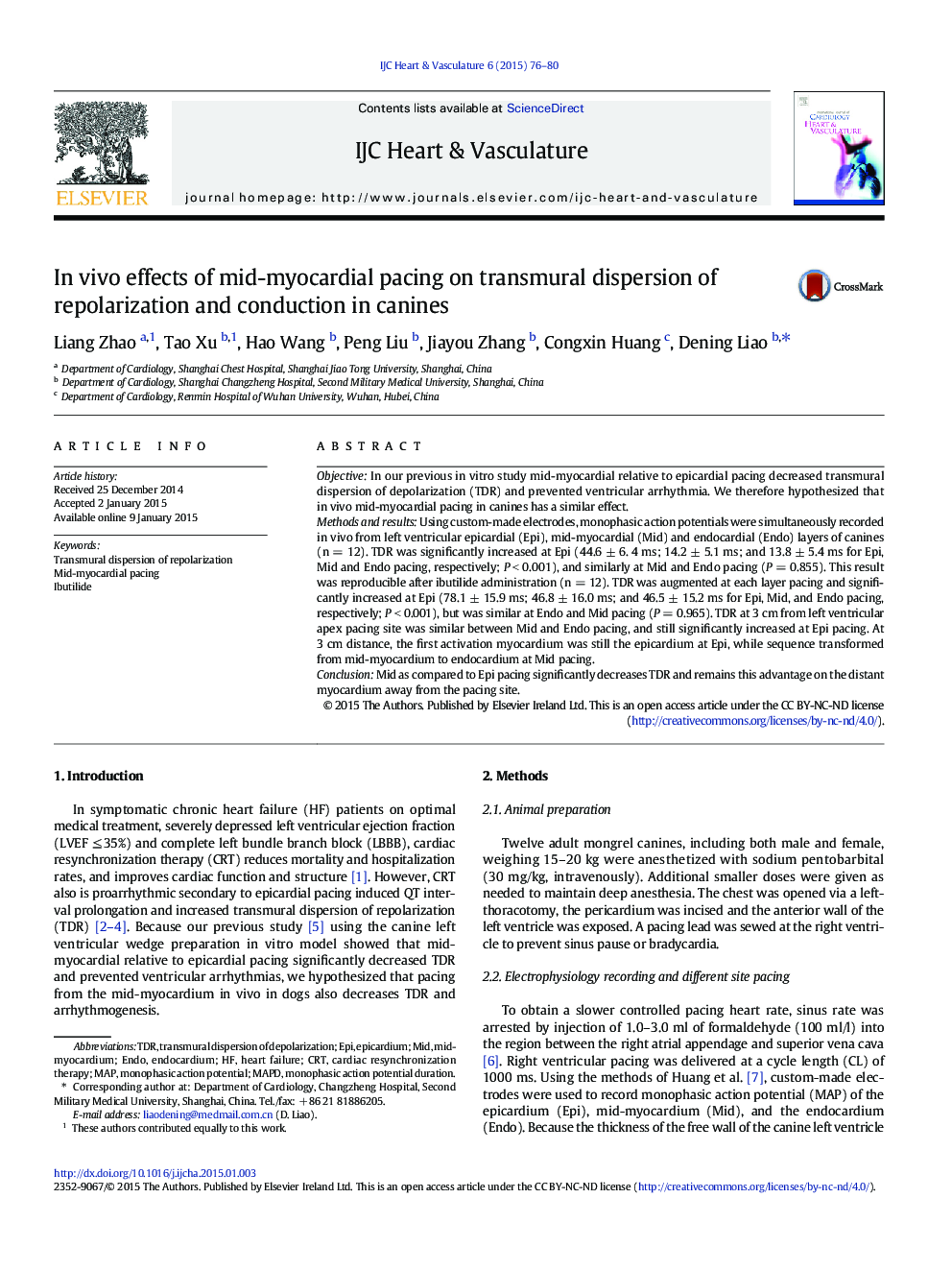| کد مقاله | کد نشریه | سال انتشار | مقاله انگلیسی | نسخه تمام متن |
|---|---|---|---|---|
| 2927064 | 1575815 | 2015 | 5 صفحه PDF | دانلود رایگان |

• We studied the effect of in vivo mid-myocardial pacing in canines on TDR, based on our previous in vitro study.
• Under epicardial pacing, epicardium repolarizes first; longest TMid–Epi results in the longest TDR.
• In vivo TDR under mid-myocardial pacing remains the same level as that under endocardial pacing and keeps this advantage on the distant myocardium.
• Mid-myocardial pacing as compared to epicardial pacing significantly decreases TDR and remains this advantage on the distant myocardium.
ObjectiveIn our previous in vitro study mid-myocardial relative to epicardial pacing decreased transmural dispersion of depolarization (TDR) and prevented ventricular arrhythmia. We therefore hypothesized that in vivo mid-myocardial pacing in canines has a similar effect.Methods and resultsUsing custom-made electrodes, monophasic action potentials were simultaneously recorded in vivo from left ventricular epicardial (Epi), mid-myocardial (Mid) and endocardial (Endo) layers of canines (n = 12). TDR was significantly increased at Epi (44.6 ± 6. 4 ms; 14.2 ± 5.1 ms; and 13.8 ± 5.4 ms for Epi, Mid and Endo pacing, respectively; P < 0.001), and similarly at Mid and Endo pacing (P = 0.855). This result was reproducible after ibutilide administration (n = 12). TDR was augmented at each layer pacing and significantly increased at Epi (78.1 ± 15.9 ms; 46.8 ± 16.0 ms; and 46.5 ± 15.2 ms for Epi, Mid, and Endo pacing, respectively; P < 0.001), but was similar at Endo and Mid pacing (P = 0.965). TDR at 3 cm from left ventricular apex pacing site was similar between Mid and Endo pacing, and still significantly increased at Epi pacing. At 3 cm distance, the first activation myocardium was still the epicardium at Epi, while sequence transformed from mid-myocardium to endocardium at Mid pacing.ConclusionMid as compared to Epi pacing significantly decreases TDR and remains this advantage on the distant myocardium away from the pacing site.
Journal: IJC Heart & Vasculature - Volume 6, 1 March 2015, Pages 76–80